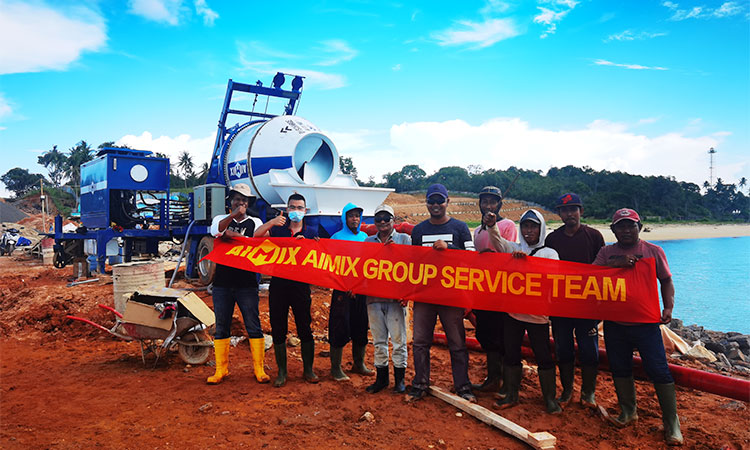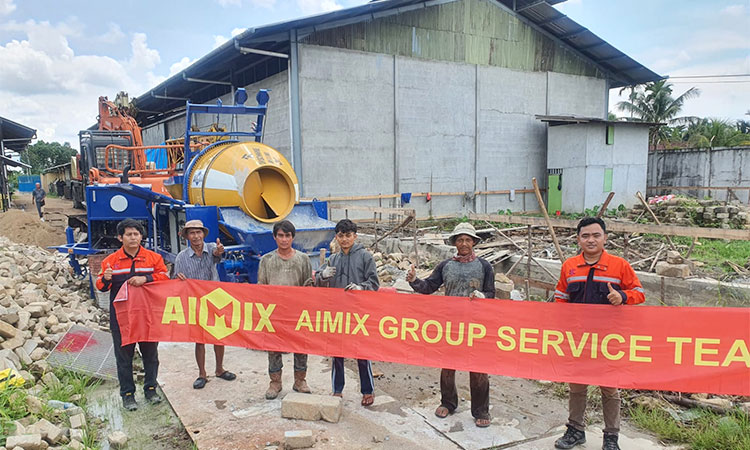Concrete pumps are indispensable in modern construction, facilitating the efficient and precise placement of concrete in various projects, from high-rise buildings to infrastructure developments. However, like any complex machinery, concrete pumps are susceptible to failure, which can disrupt construction schedules and incur costly repairs.
Mechanical Component Failure:
Mechanical component failure is one of the primary reasons for jual pompa beton portable breakdowns. Components such as hydraulic cylinders, valves, hoses, and seals are subject to wear and tear over time.
Excessive pressure, temperature fluctuations, and abrasive materials can accelerate the degradation of these components, leading to leaks, malfunctions, and system failures.

Poor Maintenance Practices:
Inadequate maintenance practices significantly contribute to concrete pump failures. Neglecting routine inspections, lubrication, and fluid changes can result in the accumulation of debris, corrosion, and deterioration of critical components.
Lack of proper maintenance can also lead to the development of air pockets in hydraulic systems, compromising performance and increasing the risk of system failure.
Material Blockages and Contamination:
Material blockages within the pump line or delivery system are common causes of jual concrete pump failure. Concrete mixtures with excessive aggregates, foreign objects, or improper consistency can cause blockages and disrupt the pumping process.
Contamination of hydraulic fluids or lubricants with debris, moisture, or other contaminants can also impair pump performance and lead to component wear or failure.
Operational Errors and Misuse:
Operational errors and misuse by pump operators can result in pump failure and damage. Overloading the pump beyond its rated capacity, improper priming procedures, and abrupt changes in pumping pressure can strain hydraulic components and lead to breakdowns.
Inadequate operator training and lack of familiarity with pump controls and safety protocols increase the likelihood of operational errors and equipment damage.

Environmental Factors:
Environmental factors such as extreme temperatures, humidity, and exposure to corrosive substances can impact the reliability and longevity of concrete pumps.
Harsh weather conditions, including freezing temperatures and high winds, can affect the performance of hydraulic systems and compromise the integrity of pump components over time.
Design and Manufacturing Defects:
Design and manufacturing defects in pump components or systems can manifest as premature wear, structural failures, or performance deficiencies.
Poor welds, casting imperfections, and substandard materials can compromise the structural integrity of pump assemblies, leading to catastrophic failures during operation.
Prevention and Solutions:
Regular maintenance and inspection schedules are critical for preventing pompa mixer beton failures. Implementing proactive maintenance programs, including lubrication, fluid analysis, and component replacement, can prolong pump life and minimize downtime.
Proper selection and preparation of concrete mixtures are essential to prevent material blockages and contamination. Conducting slump tests, aggregate screening, and maintaining consistent mix proportions can mitigate the risk of pump clogs and malfunctions.
Comprehensive operator training and adherence to safety guidelines are paramount for preventing operational errors and misuse. Investing in operator education and certification programs promotes safe and efficient pump operation, reducing the likelihood of equipment damage and downtime.
Collaborating with reputable manufacturers and suppliers ensures the quality and reliability of concrete pump components and systems. Regularly updating equipment to incorporate advancements in design and technology helps mitigate the risk of design and manufacturing defects.
Conclusion:
Understanding the causes of concrete pump failure is essential for construction professionals to minimize downtime, optimize productivity, and safeguard project timelines. By addressing mechanical issues, implementing proactive maintenance practices, enhancing operator training, and leveraging quality equipment and materials, construction companies can mitigate the risks associated with pompa pengaduk beton failures and ensure smooth and efficient construction operations.
